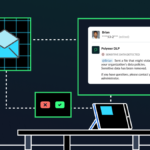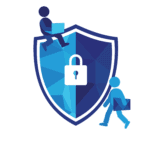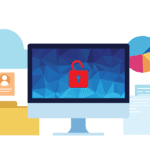According to a 2021 PwC report, 71 percent of CEOs in the United States want to know their companies’ day-to-day cyber threats.
Still, that doesn’t mean they understand the intrigues of cybersecurity.
As a CISO, this translates to three things:
- You’ll need to keep the C-suite adequately informed about current cyber threats.
- You must create detailed regular cybersecurity reports to help top-level management understand possible threats.
- Build a culture where all employees take ownership of security and privacy
Cybersecurity reporting best practices
Good threat-reporting allows the management team to understand critical factors contributing to cybersecurity within their organization.
It also allows CISOs and security teams to quantify risks that exist within an enterprise. Further, weekly or bi-weekly reporting will enable companies to gauge preparedness to manage and mitigate possible cybersecurity threats.
A general report that goes out to every employee can highlight the latest threats and what individuals can be doing to mitigate these risks.
Who should receive cybersecurity reports?
Everyone in the company receives this report, though the executive section can be specific to management.
Irrespective of your company’s policy, one thing to keep in mind when creating cybersecurity reports is the recipient’s level of comprehension of cyber-security matters.
For instance, a CEO’s report may contain more detailed explanations on the subject matter than a CIO’s. Employee version of the report can be more generic
What should cybersecurity reports look like?
While there’s no standard template for cyber threat reporting, you should stick to a format that relays information effectively. Example:

Still, as a CISO, you’ll want to write easy-to-understand reports that go directly to the point. Consider creating a customized template and format so that readers can know what to expect.
As a rule of thumb, make sure you cover enough information and actionable advice.
Regarding the frequency of reporting, you may decide to do weekly, monthly or quarterly reports depending on the need to keep the management informed about cybersecurity trends.
However, you can abandon the regular schedule if there’s an urgent threat that the C-suite and security team needs to know about.
For instance, if a 3rd party app installed in your SaaS platform is hacked, you may need to write an urgent report outlining proactive measures your team can take to mitigate the effects of the attack.
What should cybersecurity reports include?
A good cyber threat report should communicate the following:
- Phishing Threats
- Infrastructure Risks
- Vulnerabilities
- Risk and mitigation initiatives
- Actionable advice to the security team
This can be a one-pager sent monthly or quarterly.
Further, you’ll want to mention trending cybersecurity news as it happens. That way, you can keep everyone abreast of what’s happening around you and why your company should prepare for such incidences.
The bottom line
As a CISO, you have to communicate the cybersecurity posture to the board and fellow C-suite colleagues. Importantly, employees in your organization need to be informed on what you think are pressing security issues. It is through this information sharing that CISOs and other stakeholders can achieve consensus on crucial business decisions.
Effective cybersecurity reporting needs to be consistent, repeatable, and accurate. That said, CISOs should consider automating cyberthreats reporting (Notion is great for this) to enhance security, scalability, and consistency.








